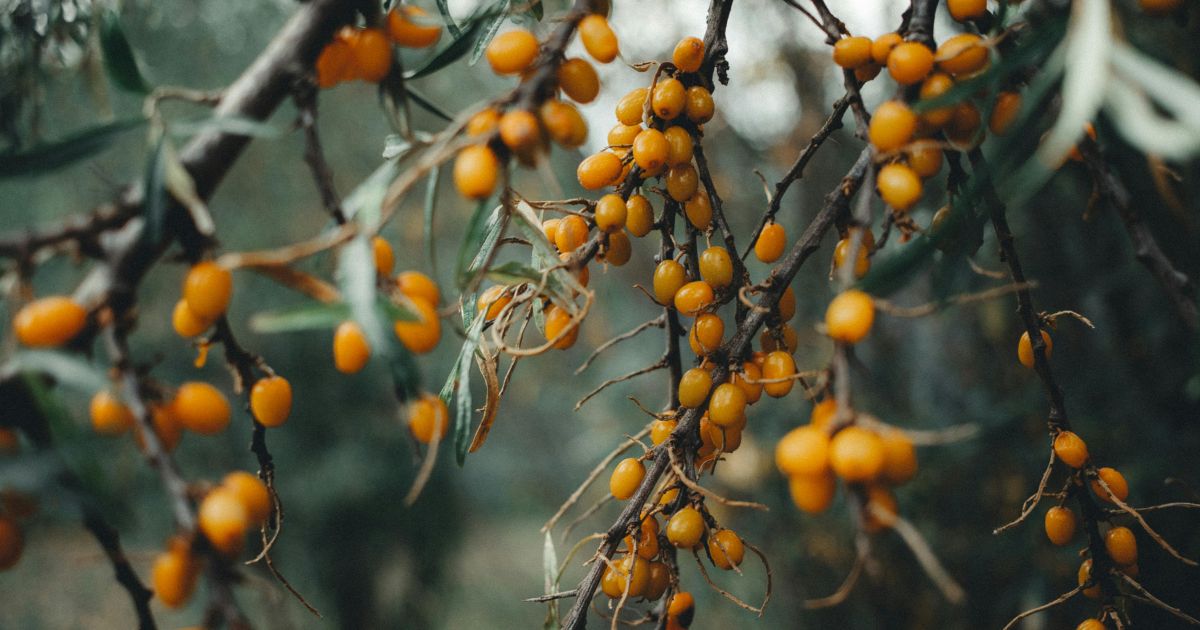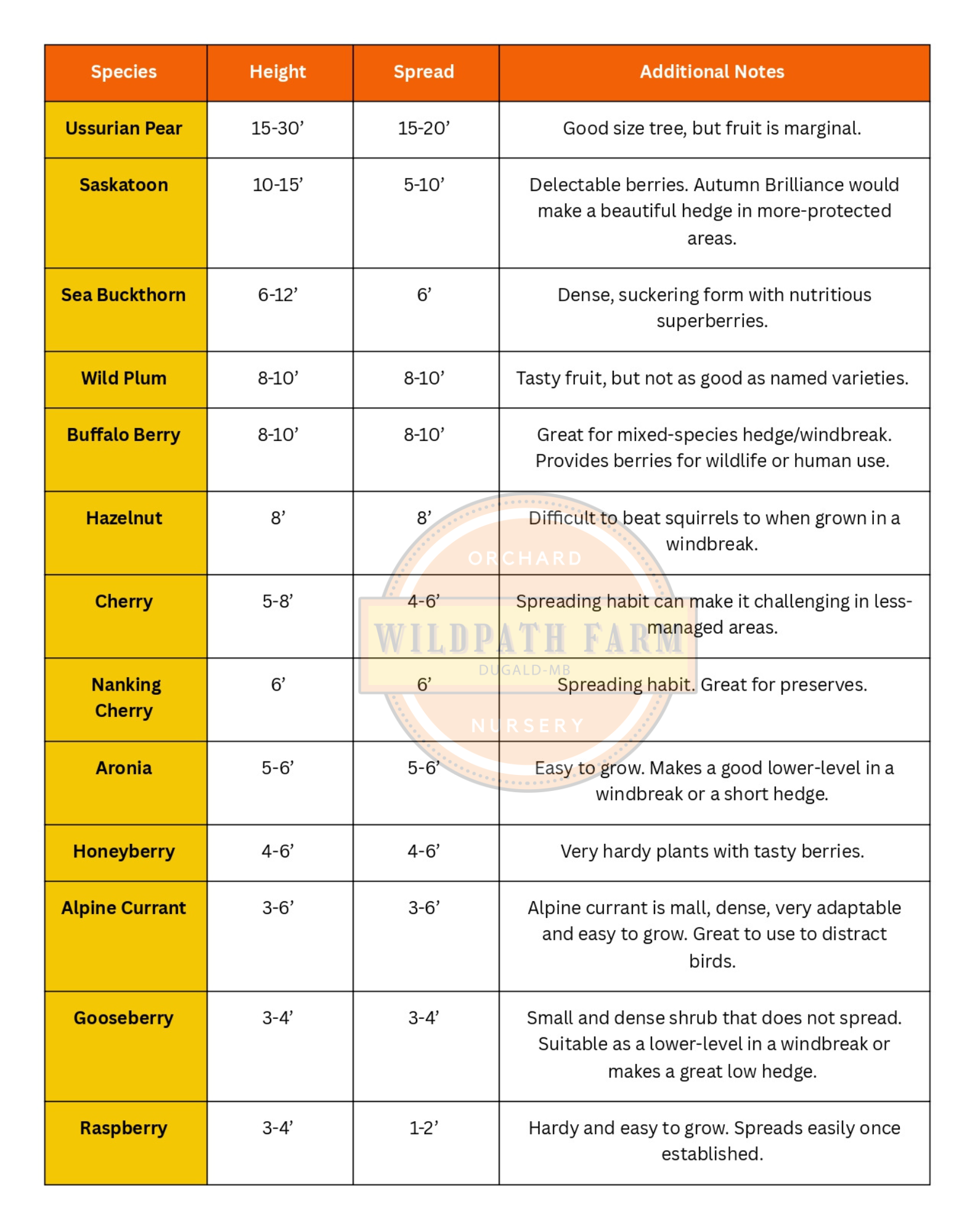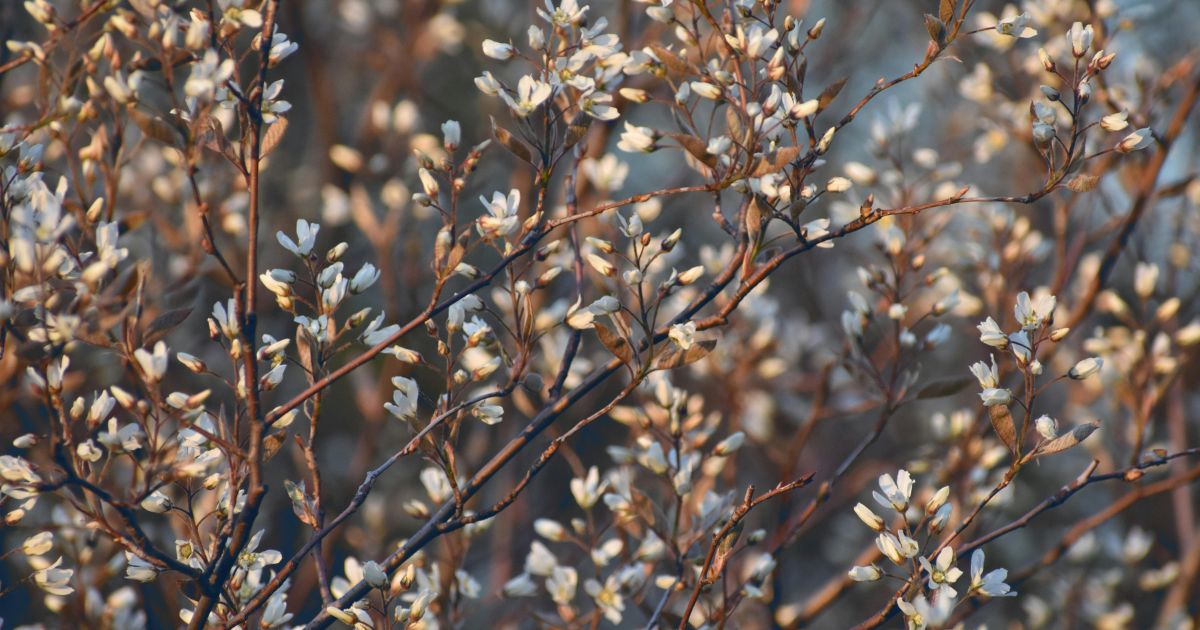As a kid growing up in a family with a commercial greenhouse, I was astounded how many ornamental plants that people would buy. I loved going outside and taking advantage of all the edible plants we had growing. I couldn’t wrap my head around why someone would choose to buy something “just to look at” rather than planting something you could eat! While it turns out the division between ornamental/fruiting wasn’t quite as black and white as I conceived, I still see tremendous value in growing productive & purposeful plants in places where people would normally just plant purely for aesthetic value.

I say productive and purposeful over edible because many plants without an edible yield still serve a valuable function and not for just aesthetic purposes as I originally thought. We use many non-edible plants in and around our orchard for various purposes. The flowers of the American Linden provide a yearly source of nectar for bees at a time when other flowers are not blooming. Alder, Buffalo Berry and other nitrogen-fixers add nitrogen to the soil and reduce or eliminate the need for additional fertilizers. Other plants provide habitat and food for birds we depend on for insect control, or fruit to distract our flying friends from our more valued crops.
Here we will highlight plants that will allow you to break wind (there’s a joke in there somewhere), and some notes about how well they fulfill that purpose and other considerations to take. This guide will also be useful for those planning a fruiting hedge, sometimes known as a fedge, without the necessary need for stopping wind. One important thing to note before beginning, the rule of diversity from nature and in the orchard holds true in planning a windbreak/fruiting hedge. A diverse windbreak allows improvements in slowing wind, creating diverse harvests and improving resiliency.

*Sizes vary widely between cultivars and growing conditions. Estimated sizes are based on single plants, not counting suckering habits. Contact us for more information.
Ussurian Pear – Ussurian pears provide the height and density some may be looking for in windbreaks. They also provide loads of smaller pears when they reach maturity. Ussurian fruit is hard and not as tasty as other pear varieties but can be used in preserves or left for the birds to enjoy. Ussurian pears have great ornamental value with plentiful spring flowers and intense fall colours.
Saskatoon or Service Berry– Saskatoons are tall and provide delicious fruit. Fruiting quality can be diminished when used in a windbreak. For those more interested in aesthetic qualities than windbreaking ability, we offer the beautiful Autumn Brilliance saskatoon. This offers incredible spring blooms and outstanding fall colours but is recommended for a more sheltered place as it isn’t as hardy as the other saskatoons we provide.
Sea Buckthorn – The first shrub that pops into my mind when thinking of something to create a windbreak while also having a useful yield. Once started, sea buckthorn grow easily and have the dense structure great for slowing down winds. The fruit – exceptionally nutritious, is often challenging to harvest due to the thickness of the shrub and spiky thorns. Sea Buckthorn suckers profusely which can be beneficial for filling in space but can present difficulties with managing if suckers are unwanted. Sea buckthorn also fix nitrogen, making them a valuable source of fertility in mixed-species windbreaks. The thorns on Sea Buckthorn function to protect it from predation but can also provide the benefit of convincing some animals to change their path.
Wild Plum – Wild plums are small trees that grow considerably thick, especially when left unpruned. This makes it excellent habitat for birds and rabbits. Wild plum produces underestimated fruit – not quite as desired as other plum varieties, but excellent for making jams and some, like me, enjoying eating them fresh. Wild plums are an excellent pollinator and could provide that function if windbreak is planted close enough to other plum trees. One concern would be that wild plum are prone to black knot. Because windbreaks and hedges are generally not maintained as much, this could lead to black knot spreading to more valued trees.
Buffalo Berry – One of the best selections in a mixed-species arrangement. Buffalo berries are not commonly eaten, but are edible and medicinal, though should be consumed in smaller quantities. They are a dense, thorny, and tough as nails native shrub. This makes them an excellent selection for a windbreak as they can provide some shelter for other species while also fixing nitrogen and helping them grow. Can function well to distract birds from more valuable crops as well.
Hazelnut - Hazelnuts provide a nice, dense thicket that can be suitable for a windbreak. There can be difficulties beating the squirrels to the harvest, but they can produce with little maintenance after they’ve become established.
Cherry (Dwarf Sour Cherry) – The cherries suited for growing on the prairies are dwarf sour cherries, mostly out of the University of Saskatchewan. These have great hardiness and suitability for prairie soils and have a surprising taste for those expecting a sour cherry to lack sweetness. The romance series (Romeo, Juliet) are said to have less suckering, though we’ve experienced considerable suckering in our orchard. D’Artagnan, a newer cultivar has even more suckering, which makes it an excellent hedge-maker.
Nanking Cherry – Nanking cherries make an excellent mid-height addition to a hedge or windbreak. Their fruit is outstanding to use in preserves or could be left for the birds to distract them from more tasty things that are being grown elsewhere. Nanking cherries generally aren’t of sufficient density to make them excellent windbreaks but would be great when combined with other trees and shrubs or used in a hedge where stopping wind isn’t a priority. They are also excellent for aesthetics with many beautiful flowers early in the season.
Aronia – This superberry is one of my personal favourites. They are easy to grow and produce loads of dark, beautiful berries. Aronia are dense, but do not have the spread or height to be used as a single-species windbreak. Instead, they can be used as a lower level or would function well in a fruiting hedge to create a border around different parts of your yard or orchard.
Honeyberry – Another wonderful and nutritious berry that doesn’t quite have the size to fit into a traditional windbreak. The hardiness and the toughness of the honeyberry could make it useful in a mixed-species windbreak with other heftier trees and shrubs.
Alpine Currant – Alpine currant are known for their ability to grow very densely with little care required. The downside is that alpine currants don’t fit the definition most people have as “fruiting” as their fruit are generally best suited to preserves. With that in mind, I feel alpine currant are greatly unappreciated for the contribution they can make. These tough and dense plants make excellent habitat for animals beneficial to the orchard and surrounding environment. Have an issue with birds eating your prized cherries? Alpine currant offer smaller berries that can distract them from the crop you are hoping to harvest. Red, white and black currants are also worth consideration. These don’t offer the same density or hedging aspects of the alpine currant but provide much higher quality fruit for eating fresh or preserving.
Gooseberry – Another tough little plant that could function on the outside edge of a windbreak or in spaces between larger trees. Gooseberries are delicious and tough. Some are known for sharp thorns which help protect them from unwanted grazing which is a useful characteristic of a less-managed windbreak or hedge.
Raspberry – Did someone say suckering? Raspberries spread significantly when established which can help grow a lower-level hedge quickly. Their fruit is top-notch and enjoyed by many. Lower plants like raspberries don’t stop much wind on their own but can function well on the outside edge of a windbreak. Slowing and breaking up wind before it encounters the other parts of the windbreak.
The Benefits of using multiple species
Windbreaks and hedges generally function best with mixed species. Not only do they offer a more diverse range of benefits, but they establish much more resilience. New tree diseases or invasive insects can become problematic over time. These can threaten to wipe out a single-species windbreak. Anyone who has experienced the loss of elms or Swedish aspen know this firsthand – potentially turning a shaded yard into a hot and sunny yard or completely losing a windbreak in the case of the once popular Swedish Aspen. Diseases also spread more rapidly when they have the same target species beside each other. Diversity can also increase the benefits of wind-blocking, providing increased habitat/food for wildlife or even helping to fertilize the surrounding plants, as is the case with nitrogen fixers.
While I’ve intentionally focused on fruiting plants that can contribute to a good hedge or windbreak, there are also many non-fruiting plants that should be considered, especially in mixed-species systems. Conifers, like our favourite Black Hills spruce, have more height and thickness to buffer a lot of wind. Deciduous trees, like oak or linden, add similar height to a windbreak.
A well-designed mixed-species system can provide a multitude of functions and leave you with a nutritious harvest that can even benefit other plantings that take advantage of additional pollinators, less wind and more wildlife habitat.
Interested in designing and growing your own fruiting windbreak or hedge? Contact us and let us help you plan out the ideal system for your site.
